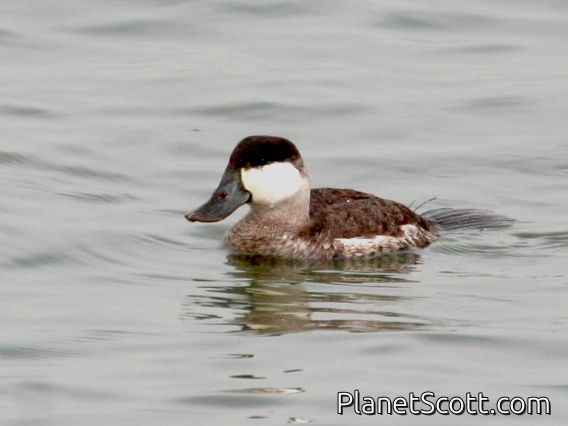Ruddy Duck (Oxyura jamaicensis)

Ruddy Duck (Oxyura jamaicensis)

Ruddy Duck (Oxyura jamaicensis) Male Winter


×



Ruddy Duck (Oxyura jamaicensis)

Ruddy Duck (Oxyura jamaicensis) Male Winter
About Ruddy Duck (Oxyura jamaicensis)
- Kingdom: Animals
- Phylum: Chordates
- Class: Birds
- Order: Anseriformes
- Family: Swans, Geese, and Ducks
The ruddy duck is a species of duck in the family Anatidae. The ruddy duck is one of six species within the stiff-tailed ducks. Stiff-tailed ducks occupy heavily vegetated habitats in North and South America as well as the British Isles, France, and Spain. In the 1940s, the ruddy duck was introduced to the United Kingdom, where it has since established a growing population. Outside the Americas, the ruddy duck is considered a highly invasive species, prompting many countries to initiate culling projects to eradicate it from the native ecosystem.
Source: Wikipedia
Visits
-
2006-02-23
Berkeley Marina, United States of America -
2006-04-16
Kern National Wildlife Refuge, United States of America -
2007-01-01
Candlestick Park, United States of America -
2008-01-04
Puerto Vallarta, Mexico -
2008-01-26
Heron's Head Park, United States of America -
2009-11-22
Palo Alto Baylands, United States of America -
2009-11-29
Heron's Head Park, United States of America -
2010-01-03
Sacramento National Wildlife Refuge, United States of America -
2010-02-21
Lerma Marshes, Mexico -
2012-04-14
Heron's Head Park, United States of America -
2012-12-02
Lake Merced , United States of America -
2012-12-13
Heron's Head Park, United States of America -
2012-12-16
Lake Merced , United States of America -
2013-03-04
John Heinz NWR at Tinicum (IBA), United States of America -
2013-03-17
Lake Merced , United States of America -
2013-03-23
Coyote Point County Park--harbor and marsh, United States of America -
2013-03-30
Heron's Head Park, United States of America -
2013-11-29
Lake Merced , United States of America -
2013-12-01
Heron's Head Park, United States of America -
2014-01-01
Heron's Head Park, United States of America -
2014-01-11
Heron's Head Park, United States of America -
2014-01-14
Candlestick Park, United States of America -
2014-02-15
Lake Merced , United States of America -
2014-02-16
Golden Gate Park - North Lake, United States of America -
2014-02-22
Santa Fe Grade, United States of America -
2014-03-04
Chabot Regional Park, United States of America -
2014-12-21
Arrowhead Marsh, United States of America -
2014-12-27
Heron's Head Park, United States of America -
2015-01-01
Candlestick Park, United States of America -
2015-01-19
Lake Merced , United States of America -
2015-01-20
Arrowhead Marsh, United States of America -
-
-
-
-
-
-
-
-
-
-
-
-
-
-
-
-
-
-
-
-
-
-
-
-
-
-
-
-
-
2025-12-16
Lake Merced , United States of America -
2026-01-07
Heron's Head Park, United States of America





